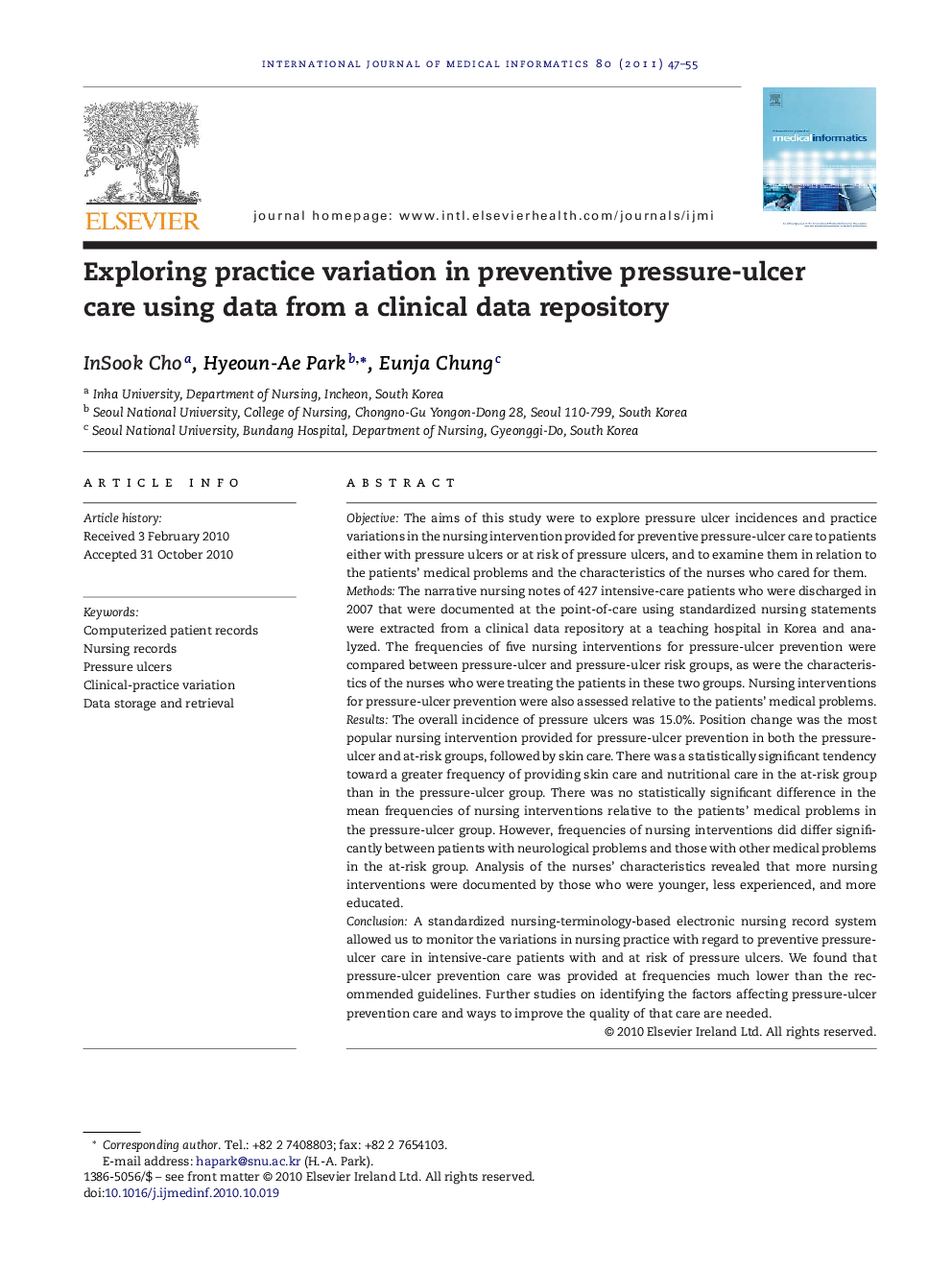| Article ID | Journal | Published Year | Pages | File Type |
|---|---|---|---|---|
| 516296 | International Journal of Medical Informatics | 2011 | 9 Pages |
ObjectiveThe aims of this study were to explore pressure ulcer incidences and practice variations in the nursing intervention provided for preventive pressure-ulcer care to patients either with pressure ulcers or at risk of pressure ulcers, and to examine them in relation to the patients’ medical problems and the characteristics of the nurses who cared for them.MethodsThe narrative nursing notes of 427 intensive-care patients who were discharged in 2007 that were documented at the point-of-care using standardized nursing statements were extracted from a clinical data repository at a teaching hospital in Korea and analyzed. The frequencies of five nursing interventions for pressure-ulcer prevention were compared between pressure-ulcer and pressure-ulcer risk groups, as were the characteristics of the nurses who were treating the patients in these two groups. Nursing interventions for pressure-ulcer prevention were also assessed relative to the patients’ medical problems.ResultsThe overall incidence of pressure ulcers was 15.0%. Position change was the most popular nursing intervention provided for pressure-ulcer prevention in both the pressure-ulcer and at-risk groups, followed by skin care. There was a statistically significant tendency toward a greater frequency of providing skin care and nutritional care in the at-risk group than in the pressure-ulcer group. There was no statistically significant difference in the mean frequencies of nursing interventions relative to the patients’ medical problems in the pressure-ulcer group. However, frequencies of nursing interventions did differ significantly between patients with neurological problems and those with other medical problems in the at-risk group. Analysis of the nurses’ characteristics revealed that more nursing interventions were documented by those who were younger, less experienced, and more educated.ConclusionA standardized nursing-terminology-based electronic nursing record system allowed us to monitor the variations in nursing practice with regard to preventive pressure-ulcer care in intensive-care patients with and at risk of pressure ulcers. We found that pressure-ulcer prevention care was provided at frequencies much lower than the recommended guidelines. Further studies on identifying the factors affecting pressure-ulcer prevention care and ways to improve the quality of that care are needed.
